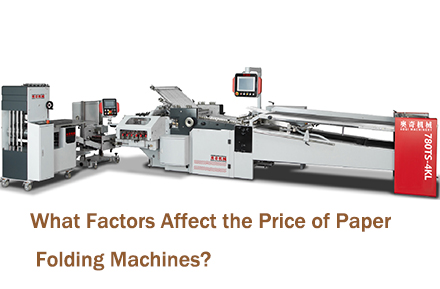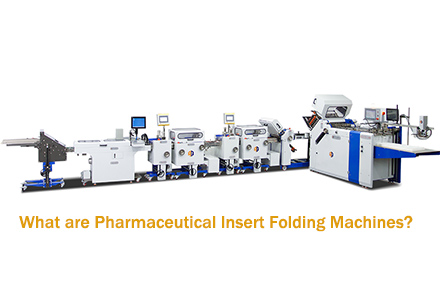Paper folding machines are essential equipment in printing houses, offices, packaging plants, and commercial production lines. Their price can vary widely depending on structure, capacity, and automation level. This article breaks down the major factors that influence the cost of paper folding machines, explains the different types available, and highlights the key features to consider when choosing one.
Breaking Down the Cost of Paper Folding Machines
The cost of a paper folding machine typically ranges from a few hundred dollars for small office models to several thousand dollars for industrial-grade equipment. Prices are mainly determined by:
-
Machine type and configuration
-
Folding speed and productivity
-
Automation level and smart controls
-
Build quality and materials
-
Brand reputation and after-sales service
Understanding these factors helps buyers select the right machine that fits both their budget and production needs.
Key Factors Affecting Price
1. Folding Speed and Productivity
Faster machines with higher sheets-per-hour capacity generally cost more.
-
High-speed servo systems increase output.
-
Industrial units support continuous feeding.
-
Machines designed for 24/7 operations require more robust components.
2. Automation Level
Automation greatly impacts cost.
-
Automatic paper feeding, alignment, and stacking features increase price.
-
PLC touchscreen control adds convenience and value.
-
Smart sensors reduce manual adjustments and improve accuracy.
3. Folding Types and Complexity
The more complex the folding patterns a machine supports, the higher the cost.
-
Simple models fold basic letter or Z patterns.
-
Advanced machines handle multiple folds like gate, double-parallel, or custom folds.
-
Precision folding systems require higher engineering and therefore higher pricing.
4. Build Quality and Durability
Premium materials and construction raise the machine’s longevity and price.
-
Stainless steel frames and reinforced rollers offer higher durability.
-
High-grade motors and bearings improve stability.
-
Reliable components reduce breakdown costs in the long term.
5. Paper Compatibility
Wide compatibility also increases cost.
-
Machines that handle various paper weights (60gsm–350gsm) are more expensive.
-
Larger paper formats require larger folding mechanisms and stronger motors.
-
Multi-layer or coated paper support adds extra engineering.
6. Brand, Technology, and After-Sales Support
Reputable brands often cost more for good reasons:
-
Stronger R&D and patented mechanisms
-
Better user experience and reliability
-
Comprehensive warranty and parts support
Different Types of Paper Folding Machines
The type of paper folding machine is a primary determinant of its price, as each category is designed for specific use cases and production scales:
Manual Paper Folding Machines: The most basic type, operated by hand or foot lever. They are compact, lightweight, and suitable for small-volume tasks (e.g., office document folding). Prices typically range from $100 to $500, as they require minimal manufacturing and no complex technology.
Semi-Automatic Paper Folding Machines: Equipped with automated paper feeding but require manual adjustment for different folding styles. They balance efficiency and affordability, catering to small businesses or print shops with moderate output. Prices fall between $500 and $3,000, depending on feeding capacity and folding options.
Automatic Paper Folding Machines: Fully automated with digital controls, high-speed feeding, and programmable folding patterns. They handle large volumes (thousands of sheets per hour) and are ideal for commercial printing plants or packaging facilities. Prices start at $3,000 and can exceed $20,000, driven by advanced mechanics and automation.
Specialized Folding Machines: Designed for specific applications, such as envelope folding, booklet folding, or heavy-duty cardboard folding. These machines incorporate custom components to handle unique paper types (e.g., thick cardstock, glossy paper) or folding styles (e.g., gatefold, accordion fold), leading to prices ranging from $5,000 to $30,000+.
Key Features of Paper Folding Machines
Advanced features directly enhance a machine’s functionality and efficiency, and they are a major driver of price differences:
Folding Speed and Capacity: Machines with higher folding speeds (measured in sheets per hour, SPH) and larger paper trays (holding 500+ sheets) are more expensive. For example, a machine folding 10,000 SPH will cost more than one folding 2,000 SPH due to more powerful motors and robust feeding mechanisms.
Folding Precision and Versatility: Models that offer precise folding (error margin <1mm) or support multiple folding styles (letter fold, Z-fold, cross fold) require sophisticated engineering. Versatile machines that handle various paper sizes (from A4 to large-format paper) or thicknesses (80gsm to 300gsm) also command higher prices.
Automation and Digital Controls: Touchscreen interfaces, programmable folding sequences, and integration with other equipment (e.g., printers, collators) add convenience and efficiency. Machines with IoT connectivity for remote monitoring or software updates are also more costly.
Durability and Component Quality: High-quality components—such as stainless steel gears, anti-jam feeding systems, and wear-resistant rollers—extend the machine’s lifespan. Brands using premium parts (e.g., German-made motors, Japanese sensors) often charge more for reliability.
Aoqi's Paper Folding Machine
AOQI Paper Folding Machine is a CE-certified industrial-grade solution ideal for commercial printing, pharmaceutical inserts, flyers, and signature production, supporting 16p/32p paper sheets and diverse formats with paper sizes from 150180mm to 7801200mm and thickness 40-250gsm; it boasts stable feeding via pallet/continuous feeders and three-hole suction wheels, precise wrinkle-free folding with belt-driven rollers and imported spiral PU coating, intelligent operation via PLC and optional HMI, flexible expansion with optional K2 Independent Knife or stacker delivery, plus a 18-month warranty and lifetime technical support, all delivering a maximum folding speed of 220m/min for efficient, low-maintenance production.
Conclusion
The price of a paper folding machine is a reflection of its cost structure, type, core features, and market dynamics. Manual and semi-automatic models cater to budget-conscious users with low to moderate needs, while automated and specialized machines target businesses requiring high efficiency and versatility—at a higher cost. When purchasing, buyers should balance their production volume, folding requirements, and budget, considering not just the upfront price but also long-term costs (maintenance, spare parts, downtime). By understanding the key factors driving prices, businesses can make informed decisions that align with their operational needs and financial goals.




